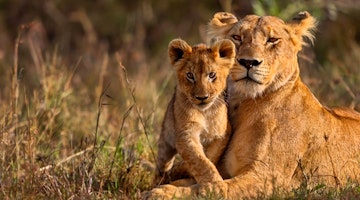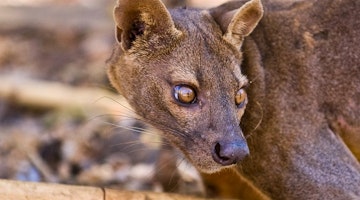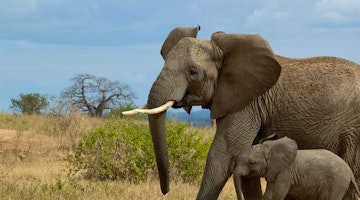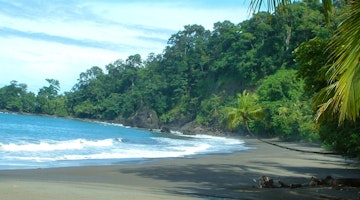This extraordinary 72,000ha National Park (also known as Kirindy Mitea) is located about 100km south of Morondava, where the country's Western and Southern floristic domains merge. With extensive coastline included in the park, there is a healthy mangrove system. Behind the high sand dunes on which remarkable Spiny bush (Euphorbia-Didieraceae thicket) thrives, is a sacred lake where seasonally, Flamingos can be observed. The park also includes some small islets (more like unassuming sand-bars) off Belo Sur Mer, where snorkelling is possible.
In the deciduous dry forests of Kirindy Mitea, visitors can see innumerable, impressive specimens of three Malagasy baobab species - Adansonia grandidieri, Adansonia za and Adandonia rubrostipa. The mangrove system provides a roosting site for an enormous and raucous colony of Madagascar flying foxes (Pteropus rufus).
In the dry deciduous forests, which are Madagascar's most endangered habitat type, your guide will also point out interesting trees such as Nato, used to construct the dhows which are of designs taught to Veso fishing folk by European pirates centuries ago. This tree is also used to make Sakalava coffins. Another is Farafatsy, used to make smaller pirogues. In the sub-arid thorn thickets, you can see Octopus trees (Didieraceae).
Wildlife: key species present in the park include Verreaux's sifakas and Red-fronted brown lemurs. Fosa are present albeit very rarely seen. Birding is rewarding. Among other species, we saw Coquerel's and Crested couas, Sickle-billed and Hook-billed vangas and at the sacred lake, Flamingos and Humblot's herons. (October 2019). Reptiles such as Collared iguanid and Oustalet's chameleon are plentiful. Mammal watchers should note that the lemurs are not nearly as approachable as is the case in Menabe Antimena (north of Morondava, where the other Kirindy, or 'Kirindy Forest' is located) - the lemurs of Kirindy Mitea have yet to be habituated to human presence so tend to be skittish and fast. (Best chances of seeing sifaka are at Antoatsifaka Research Station, where there is an area the guides refer to as 'Rebecca'. Equidistant from Belo Sur Mer is another forest area, Ambararata, where the baobabs are simply mind-blowing; we easily saw (wild) lemurs and birding and found 'herping' and birding rewarding. Trails are easy, generally being over flat, sandy terrain.
To get to the park, it is necessary to stay at Belo Sur Mer, where we recommend a minimum of 4 nights, taking logistics and attractions into account.
Derek Schuurman
Travel Specialist
Looking for inspiration?
You'll find expert travel guides, holiday ideas and insider tips now on the Rainbow blog

Top 5 First Time Safari Destinations

10 Strange Animals and Where to Go to See them


Salar De Uyuni - The World's Largest Salt Flat


Top five South Africa Safari lodges

Sustainable Tourism In Corcovado National Park, Costa Rica

Why Choose Us?
Passionate travel experts
- We've been leading wildlife travel since our first South Africa tours over 25 years ago
- Our Travel Specialists have lived in their specialist area for years
- We work with local guides to immerse you deeper in our diverse range of experiences
Personal & tailor-made
- You'll speak to your own expert who'll share their first-hand knowledge
- We'll make your itinerary seamless with 24/7 emergency contact available
- Your Travel Specialist will listen to ensure you have the best chance of seeing the wildlife you love
Responsible by nature
- We take care to actively contribute to the conservation of environments we visit
- For select countries, we make a charitable donation on your behalf when you make your booking
- We've partnered with conservation experts and NGOs to curate responsible tours
For the latest travel advice from the Foreign, Commonwealth and Development Office check www.gov.uk/travelaware
